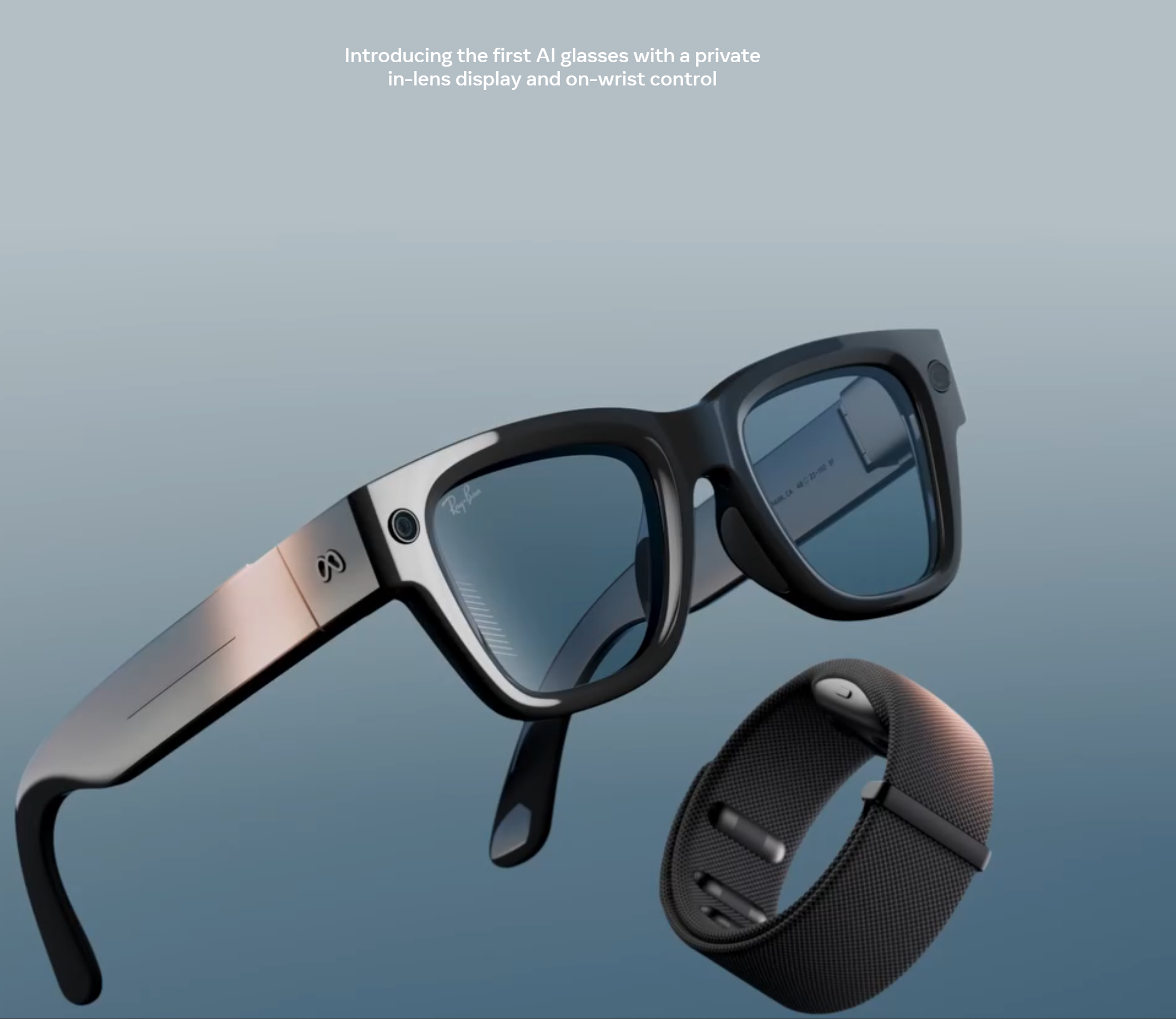Meta Launched Its New AI Glasses, And The Hidden Opportunity Might Be In Construction!
Yes—it finally happened. Meta has launched their new AI glasses, and the features are worth paying attention to.
📍 Imagine directions overlaid right on your lenses—no more awkwardly waving your phone around to reorient yourself.
📞 Or making a video call where the person on the other end not only sees your face, but literally sees what you’re seeing. Picture calling your mom so she can watch her grandkids playing in real time through your eyes.
🖐️ And the big flex? A neural wristband that reads your finger movements—so you can scroll mid-air and switch content on your glasses with a subtle gesture.
The pitch is simple: smart glasses succeed where VR headsets never could. They’re lightweight, socially acceptable, and don’t scream “gamer cave.” But here’s why I’m genuinely excited: this isn’t just a consumer gadget. This has game-changing potential for construction.
The Construction Lens 👓
The construction industry has been circling AR/VR for over a decade. We’ve seen pilots with Microsoft’s HoloLens, Trimble XR10, and bulky VR headsets meant to overlay BIM models in the field. But here’s the truth: adoption stalled because the tools were either too clunky, too expensive, or too divorced from daily workflows.
Now picture this with Meta’s AI glasses:
🔹 Hands-Free BIM in the Field
No more juggling an iPad in one hand and a coffee in the other, or spending time walking back to the trailer just to pull up drawings or the model. A superintendent could literally say, “Show me Level 3 MEP layout,” and boom—the ductwork, pipes, and conduits light up right on the ceiling above them. No lag. Just design intent overlaid on reality, exactly where it belongs.
🔹 Remote Collaboration With Quick Documentation
Forget documentation in the old way - clicking pictures, creating issues, and marking up on 2D or 3D snapshots on your project management software, which is already lagging on your iPad. With AI glasses, a field engineer could snap their fingers to take a picture, then just say, “Create issue, level 5 slab - 4 pipe sleeves missing”. Instead of marking up PDFs, they could tag an issue mid-air, pin it to the exact element, and sync directly with Procore, ACC, or whatever the project platform is. Even better? Call the architect, the client, or a trade partner, and they can literally see through their eyes. That’s real-time collaboration, 100% hands-free, without ever breaking jobsite safety flow.
🔹 Real-Time Quantity Tracking
Okay, now I’m letting my imagination run wild. But picture this: as you walk the corridor, AI vision cross-checks the BIM model and counts what’s in place. “32 diffusers installed. 5 missing in Corridor B. That’s punch listing without a clipboard! The data just happens as you move.
🔹Safety + Training Layer
And here’s where it gets even better. For new workers, the glasses could flag hazards in their actual line of sight: ⚠️ Live electrical panel ahead. Or, Hard hat zone—check your PPE. For apprentices, step-by-step AR guidance could walk them through a task while they keep both hands free. And unlike clunky VR headsets, these slip right under a hard hat. That means they’re practical and actually safe on real jobsites.
Unlike VR headsets, these glasses don’t cut you off from the world—they layer onto it. And that’s huge on a jobsite, where awareness isn’t optional—it’s life-saving.
What makes them even more intriguing is the neural wristband. Instead of fumbling with menus, you just scroll mid-air, snap to switch drawings, or pinch your fingers to flag an issue. Pair that with AI that actually understands context—say, “Show me plumbing for this bathroom”—and suddenly AR doesn’t feel like a clunky science experiment. It feels natural, like something you’d actually use while walking a site.
And here’s where things get real: the cost curve is finally bending. At $379–$799, Meta’s glasses are still a splurge for consumers, but they’re nowhere near the $3,000–$5,000 price tags of enterprise AR headsets. That gap matters. It means pilots don’t have to stay pilots—contractors could realistically equip entire crews, not just one “tech champion” per project.
Will these glasses single-handedly close construction’s productivity gap? Of course not. But they could give the industry something it’s been chasing for years: a frictionless, wearable interface for design data in the field.
If Meta pulls it off, site workflows won’t center around running back to the trailer, juggling iPads, or waiting until the next coordination meeting. They’ll center around seeing the 3D model where it matters most—on site, in real time.
That’s the actual breakthrough. Not just another gadget to show off, but a tool that could collapse the space between design and execution.

